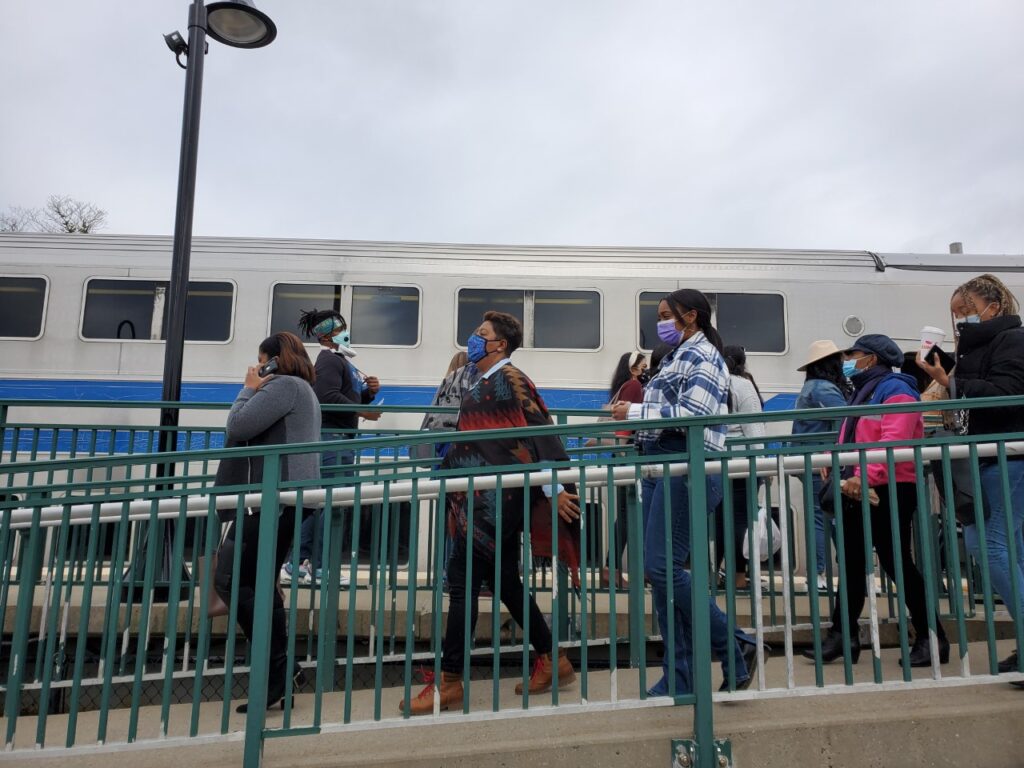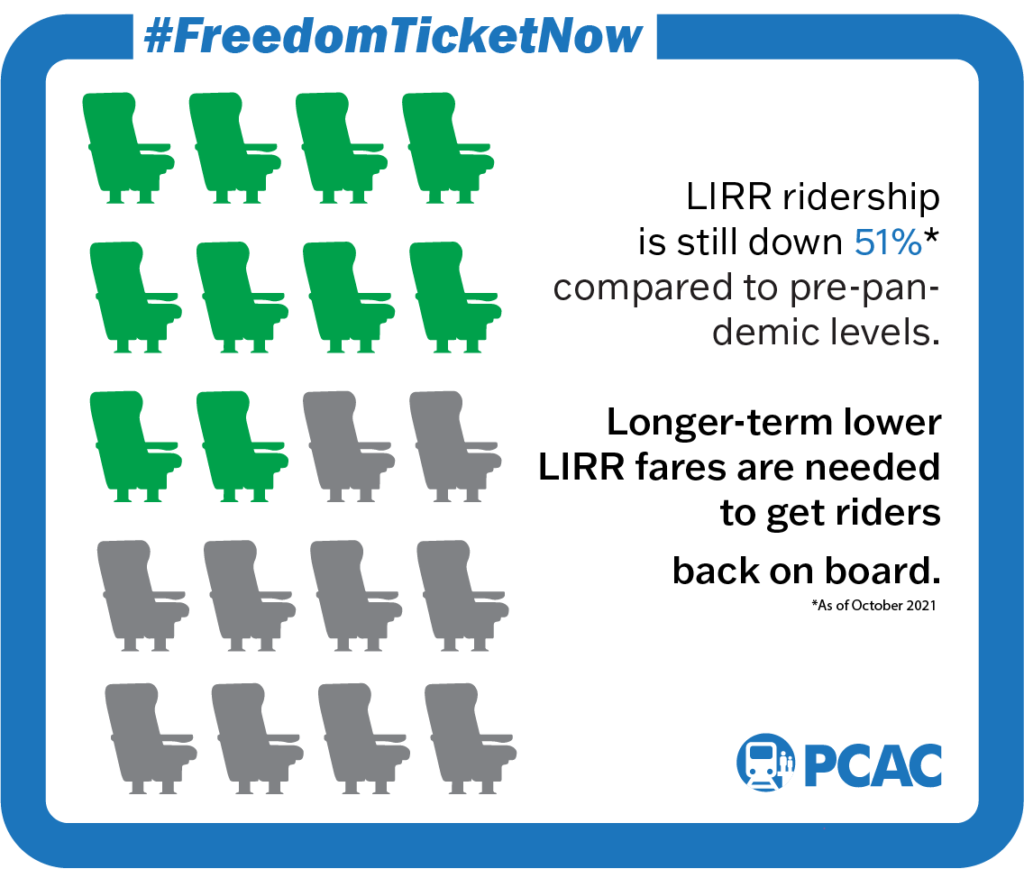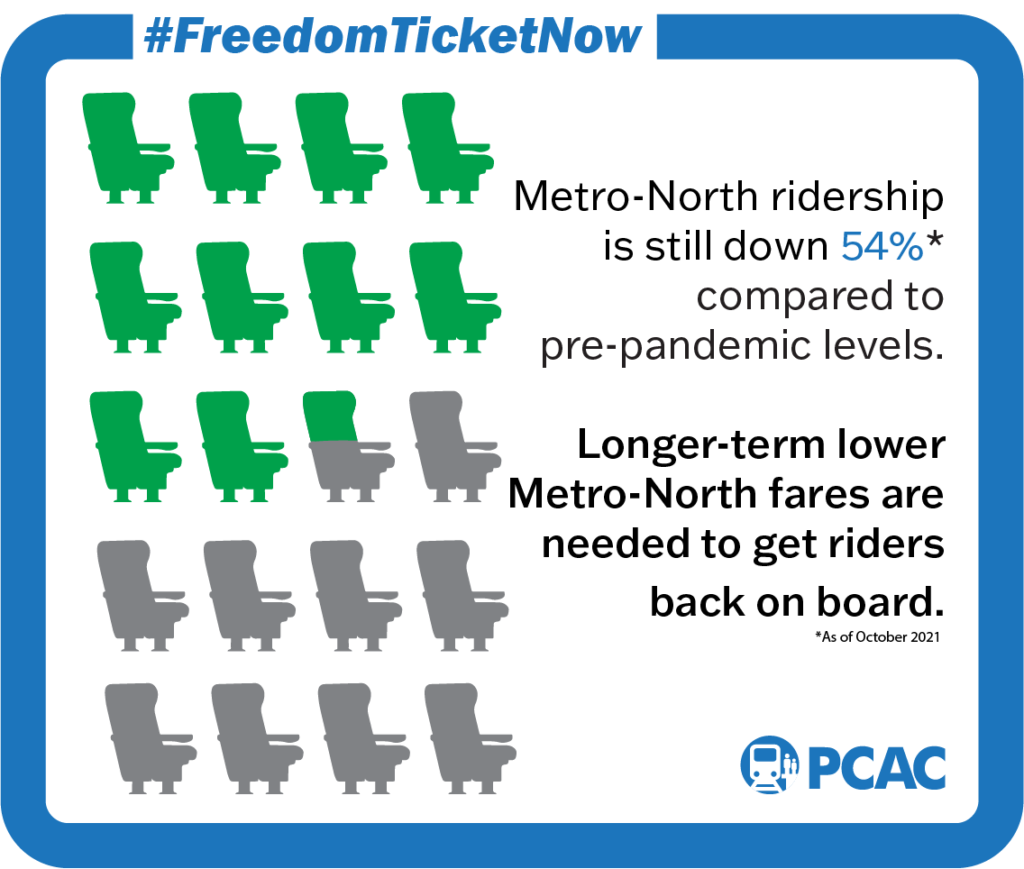It used to take Karen Hamilton almost 90 minutes to travel from her Southeast Queens home to Lower Manhattan using the bus and subway. The long commute outweighed the savings of a $33 monthly unlimited MetroCard.
Taking the LIRR from the station near her home would shave considerable time off her trip, whether it meant riding to Penn Station or Atlantic Terminal and ending her trip on the subway. Taking the railroad would eliminate transferring from bus to train to train and reduce her travel time to 30 minutes. The time savings of commuter rail comes at a high cost: a weekly ticket cost $75, plus the $33 weekly subway fare to get her to her destination.
But that was before she discovered Atlantic Ticket, a discounted $60 weekly LIRR ticket from stations in Southeast Queens to Atlantic Terminal that provides a free transfer to the subway or bus. With Atlantic Ticket, Karen can benefit from shorter commutes using the LIRR, at a much more affordable price.
Expanding commuter rail discounts beyond the current LIRR Atlantic Ticket pilot program is needed now more than ever, both for riders and the MTA itself. That’s why PCAC is recommending that the MTA implement Freedom Ticket, the genesis of Atlantic Ticket, a discounted Metro-North and LIRR ticket from stations within NYC that includes a free transfer to subways and buses. It would be transformative for riders from the Bronx, Brooklyn, and Queens by offering them access to faster and more affordable commutes. And with the MTA exploring creative fare restructuring strategies to announce and vote on at its December Board meeting, there is no better time to implement Freedom Ticket type discounts and other proposals, like 20-trip tickets at a discount.
The COVID-19 pandemic has drastically affected the MTA’s ridership, especially on its commuter rail systems, resulting in far less fare revenue for the transit system. Ridership data indicates that riders are returning, but there is still a long way to go before all riders come back, if they ever do. As of October 2021, NYC Transit subway and bus ridership had rebounded to 56 percent of pre-pandemic levels of October 2019, with the commuter railroads at 46 percent for Metro-North, and 49 percent for LIRR. Making the most of our commuter rail assets will be crucial not only for riders and the MTA, but also for regional recovery efforts. Fare discounts like Freedom Ticket can be the backbone of these efforts.
Freedom Ticket can:
- Help regional riders and essential workers travel more affordably and efficiently
- Fill empty commuter rail seats with fare paying riders
- Support regional economic recovery efforts
- Attract drivers out of their cars in time for congestion pricing implementation, reducing roadway congestion and CO2 emissions.
City riders need improved transit, especially in areas where affordable and efficient options are limited.
Highlighted during the pandemic are the nearly 300,000 essential workers in the proposed Freedom Ticket expansion areas in Northeast and Central Queens, Far Rockaway, and the Bronx who are disadvantaged by inequitable transit options. With 35 percent employed in healthcare or the service industry, NYC depends on them every day to show up in person no matter what crisis the city may face. But travel times for these workers ‒ and all riders ‒ in these areas can be as high as an hour-and-a-half each way using local buses to connect to the subway to reach Midtown Manhattan, compared to just 30 minutes on the LIRR and Metro-North. This would save hours weekly for the people who make up the backbone of our region.
Even 19 months into the pandemic, there is capacity for Freedom Ticket riders on both Metro-North and the LIRR – both still operating with nearly half the riders they once had in 2019, and with thousands of empty seats.
And let’s not forget about suburban riders, who also deserve affordable and efficient transit options.
When combining commuter rail fares, MetroCard fares, vehicle ownership expenses, and parking fees, as many suburbanites do, overall travel expenses can be overwhelmingly expensive. LIRR and Metro-North commuters who live the furthest out pay up to $500-$600 per month when factoring in city subway/bus fares – but not including parking fees at home stations and vehicle expenses. The second phase of Freedom Ticket includes proposed suburban off-peak discounts for those who can commute outside of traditional peak hours, and for reverse commuting, in order to foster much-needed suburban economic growth.
More affordable fares will help entice drivers out of cars and onto transit while generating revenue for both Metro-North and the LIRR by filling empty seats with fare paying customers, including the more than 500,000 essential workers who live outside of NYC. Especially in anticipation of congestion pricing, the MTA needs to prove to suburban drivers that the railroads will get them into the city efficiently and affordably. Freedom Ticket is the perfect opportunity to do so.
This is exactly the right time for Freedom Ticket discounts. With economic hardships for riders and the MTA, available railroad seating capacity, and the need to drastically cut vehicle emissions, our region needs it now more than ever.
Read the Freedom Ticket Phase II report with recommendations:


